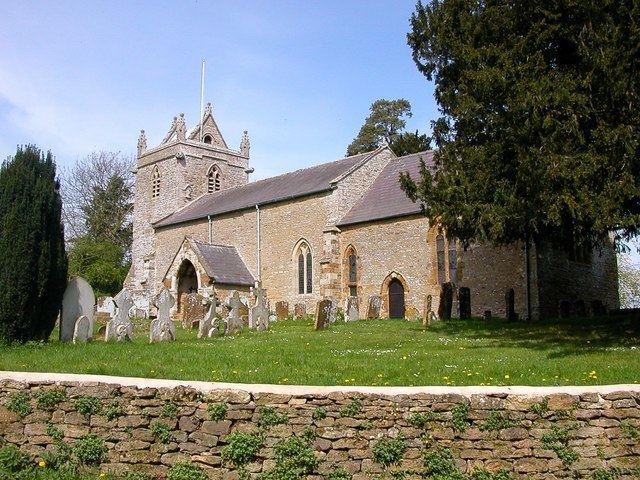Population 327 (2011 Census) Civil parish Thorpe Mandeville | OS grid reference SP5344 Sovereign state United Kingdom Local time Friday 4:07 AM Dialling code 01295 | |
 | ||
Weather 11°C, Wind S at 11 km/h, 78% Humidity | ||
Thorpe Mandeville is a village and civil parish in South Northamptonshire, England about 6 miles (10 km) northeast of Banbury in neighbouring Oxfordshire. The hamlet of Lower Thorpe is just north of the village.
Contents
- Map of Thorpe Mandeville Banbury UK
- Manors
- Parish church
- Social and economic history
- Amenities
- References
Map of Thorpe Mandeville, Banbury, UK
The population of the parish has grown slowly over the centuries. It was recorded as 137 in the 1801 Census, 178 in the 1991 Census, 194 in the 2001 Census and 327 (including Edgcote) in the 2011 Census.
Manors
The Domesday Book of 1086 records the village as Thorp. "Mandeville" is a corruption of Amundeville. Richard de Amundeville was lord of the manor in the 13th century.
In 1346 a house and 9 acres (3.6 ha) of land at Thorpe Mandeville were listed amongst the estates of the Augustinian priory at Chacombe.
The Kirton family lived at Thorpe Mandeville manor house from 1554 to 1685. Thomas Kirton (1537–1601) of Thorpe Mandeville was Common Serjeant of London. The current ironstone manor house was built early in the 18th century. The south front of the house is of five bays and is in the style of Thomas Archer. It is a Grade II* listed building.
Parish church
By the end of the 11th century Thorpe Mandeville had a parish church, which was included in the early endowments to a Cluniac priory of the Abbey of La Charité-sur-Loire that had been founded at Preston Capes in 1090 and moved to Daventry shortly thereafter.
The present Church of England parish church of Saint John the Baptist, built of local ironstone, dates largely from the early part of the 14th century. The north aisle has Decorated Gothic windows and an arcade of three bays. The chancel has windows dating from about 1300, the middle of the Decorated Gothic period. The chancel was restored in 1872 under the direction of the architect Albert Hartshorne.
High on the east wall of the west tower is a small stone relief of a man under a hood mould. On the north wall of the north aisle is a 14th-century painting of Saint Christopher carrying Jesus. On the west wall of the north aisle is a monument to Sir Thomas Kirton (died 1601) and his wife Margaret (died 1597). The church is a Grade I listed building.
The tower has a saddleback roof and three bells. Henry I Bagley of Chacombe cast the second bell in 1636. John Briant of Hertford cast the treble bell in 1790. Robert Taylor, who had foundries at Oxford and St Neots, cast the tenor bell in 1826.
The parish is now part of the benefice of Culworth with Sulgrave and Thorpe Mandeville and Chipping Warden with Edgcote and Moreton Pinkney.
Social and economic history
Thorpe Mandeville had a Church of England school that was built in 1864 and enlarged in 1898. It was closed in 1967 and the building has been the village hall since 1970.
The Hill, about 1 mile (1.6 km) west of Thorpe Mandeville village, is a house designed by C.F.A. Voysey and built in 1897–98 for a member of the Hope Brooke family.
In 1900 the Great Central Railway completed a line linking its new main line at Culworth Junction with the Great Western Railway at Banbury Junction. The link line passed through the northern part of Thorpe Mandeville parish. In 1911 the Great Central opened Chalcombe Road Halt 2.5 miles (4 km) west of Thorpe Mandeville and in 1913 it added Eydon Road Halt at Culworth 1.5 miles (2.4 km) north of Thorpe Mandeville. British Railways closed both halts in 1956 and closed the line between Culworth Junction and Banbury Junction in 1966.
Amenities
The village has a public house, the Three Conies, that is controlled by the Hook Norton Brewery. Thorpe Mandeville is on an important former drovers' road called Banbury Lane. The Three Conies was built in the 17th century as a drovers' inn, providing overnight accommodation for drovers and their livestock.
